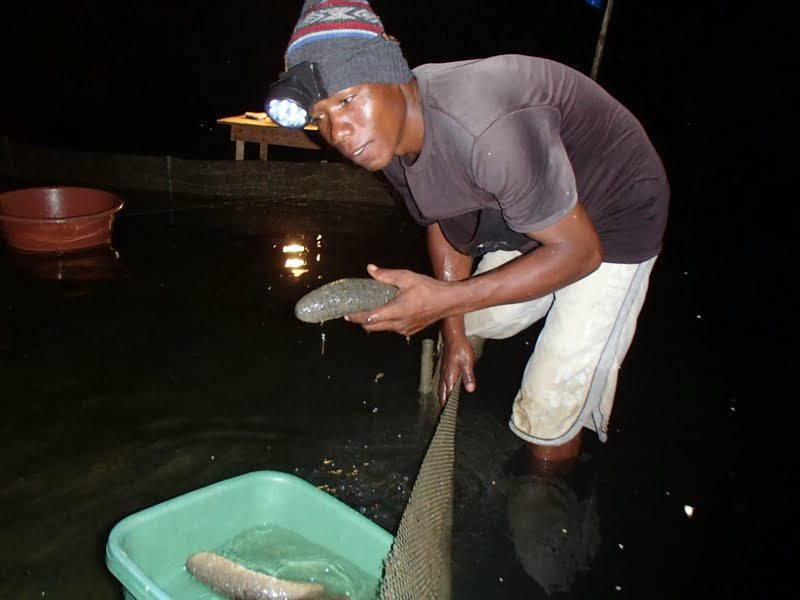By Jérémie Bossert, Belo Sur Mer Coordinator, Madagascar
Finally Madagascar has a democratically elected president! Things here have a tendency to move slowly, be it getting an authorisation signed, ordering a new generator part, or even electing a president.
However, last week, as I was standing in the middle of the night with my feet in the water in the channel in front of the fishing village of Belo sur Mer, I witnessed a good example of something to the contrary of the usually snail-paced progress. The sea cucumbers that we were monitoring were weighing in at just over 200g on average, only a few months after they reached Belo sur Mer in a plastic bag, weighing around 10g each. Furthermore, to our surprise, the aquaculture trials here went from an ambitious idea to reality in just a few months!
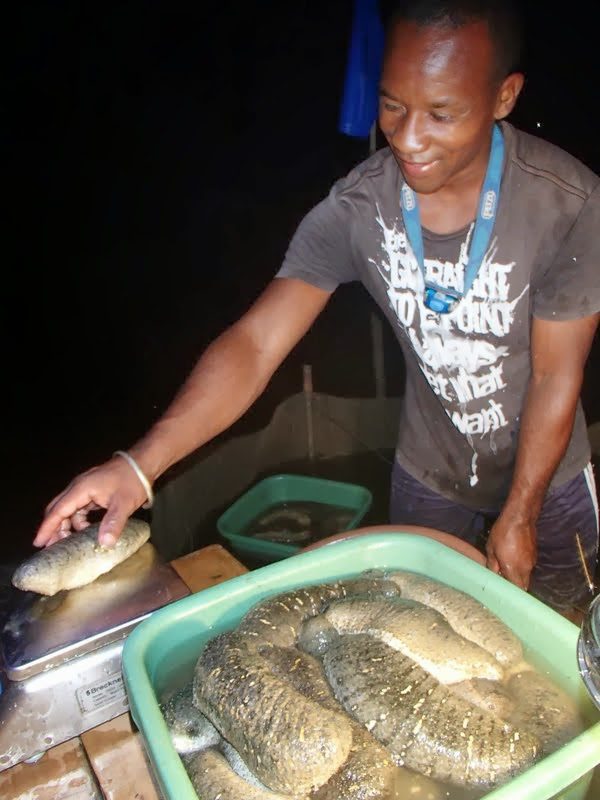
This incredible story started last August in Andavadoaka, after the aquaculture presentation at the annual Blue Ventures staff conference. In the Velondriake area, this innovative type of community-based sea cucumber farming has been going on since 2007, thanks to a close partnership with Copefrito / IOT (Indian Ocean Trepang), and Toliara’s Marine Science Institute (IHSM), who together have developed a patented technology for rearing massive amounts of juvenile sea cucumbers, that can be grown out in community-managed pens.
I was speaking to Antoine, Blue Ventures’ long-term aquaculture programme coordinator, and threw him the idea like a bottle to the sea:
“So, when are you coming up to Belo sur Mer, to see if we could start something in terms of aquaculture?” His answer could have sounded like a joke: “Well, what about the end of the month?” I almost laughed, except the look on Antoine’s face told me that he wasn’t joking…
In Belo sur Mer, our work has primarily focused on supporting local communities to develop mangrove reserves, and to date, a total of nine mangrove reserves have been created over a stretch of 60km of coastline, aimed at improving the sustainability of important mangrove fisheries as well as building local management capacity.
In 2013, we also began replicating Blue Ventures’ community health programme in Belo sur Mer, as part of the organisation’s integrated Population-Health-Environment (PHE) approach. This voluntary family planning initiative, along with our community-led marine conservation activities, enables women and their partners to choose the number and spacing of their births; deciding the family size that is right for them, and achieving a more sustainable balance with the environment upon which they depend.
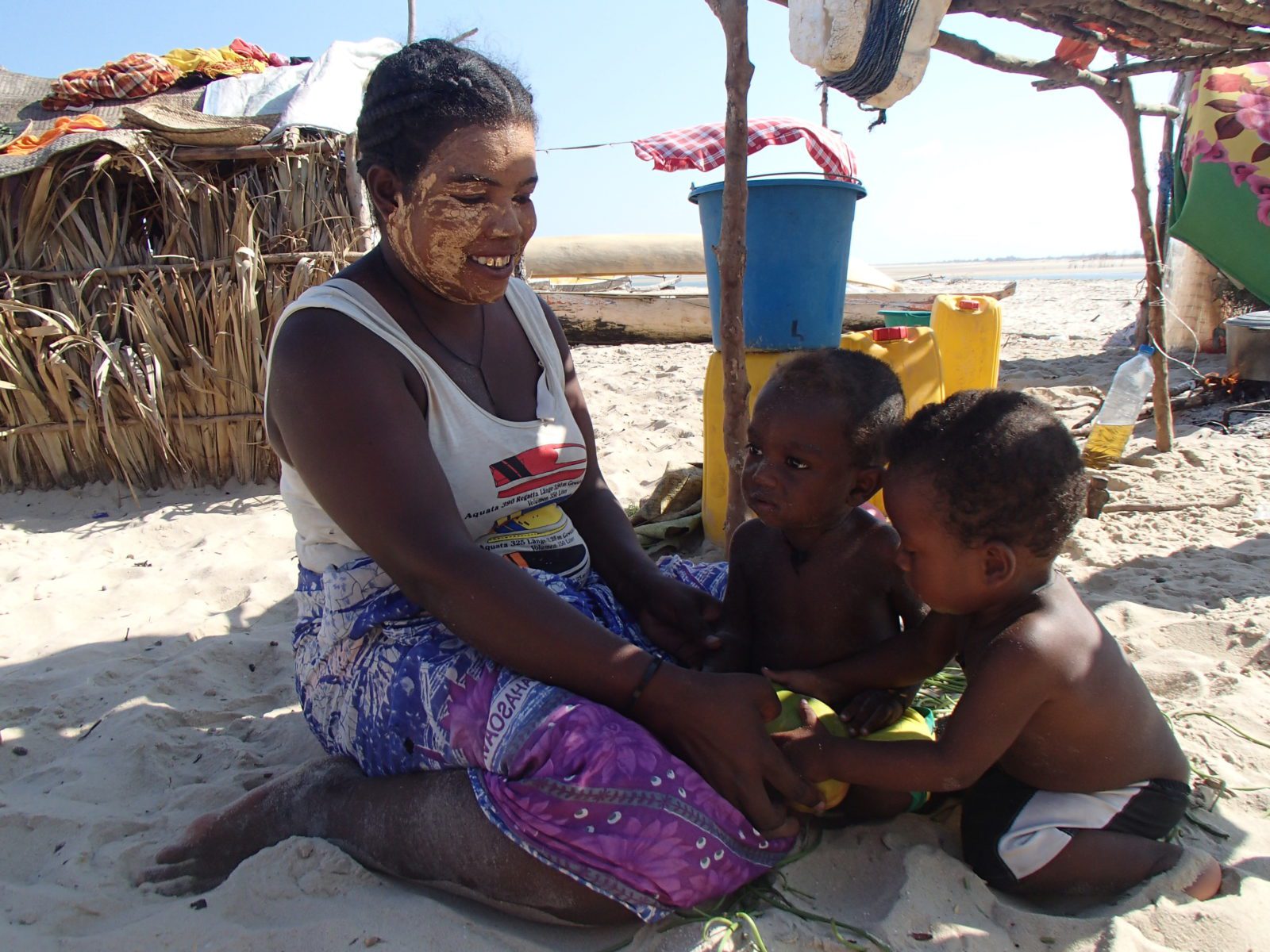
But pressure on resources is also being driven by a lack of alternative livelihoods to fishing. Community-based aquaculture is a potential solution to this, providing fishers with an alternative means of income. So, here we were a few weeks after the Blue Ventures conference, with Antoine and a few other aquaculture-enthusiast colleagues along with the director of Copefrito, cruising the mangroves around Belo, looking for suitable sites to farm sea cucumbers and seaweed.

Once we had an idea of the area’s potential, the second step was to present the idea of the project to both local communities and authorities. This was done through village meetings, powerpoint and video presentations, and meetings with village elders and local and regional authorities. The idea was very enthusiastically received at all levels, and a trial of juvenile sea cucumbers and a few lines of seaweed was decided to be carried out within a month.
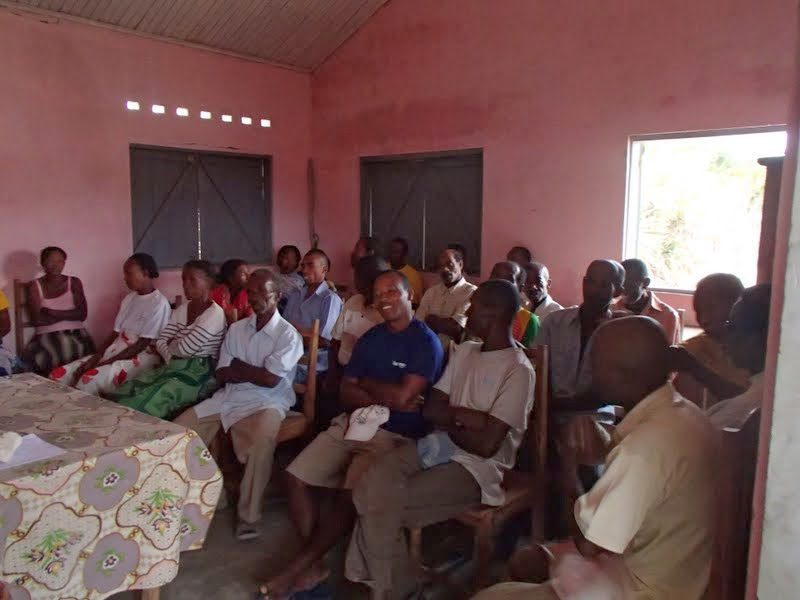
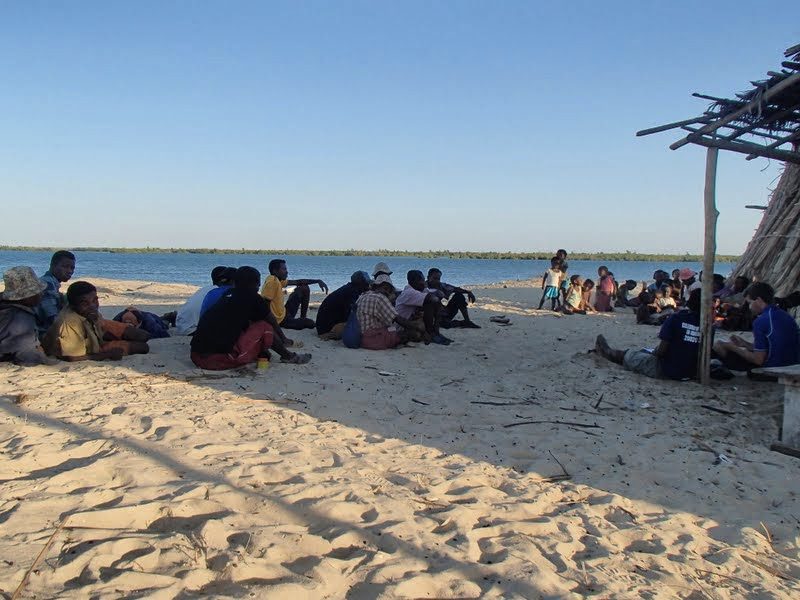
To ensure that we were ready to receive this precious cargo, we sent Toto, Fran and Solo, three local BV staff from Belo sur Mer, to our main aquaculture area in Tampolove (near Andavadoaka) for two weeks of intensive training. They came back armed with the skills needed to build pens for sea cucumbers and to take care of seaweed lines. The timing was tight, as we only had a few weeks before IOT’s team came to deliver seaweed lines and 1,500 hatchery-reared juvenile sea cucumber directly from Toliara.

Upon their arrival, we were pleasantly surprised to be visited by a delegation of regional authorities, coming to Belo on a special trip in order to meet with us and our partner Copefrito, to discuss and see the plans for this project on the ground.
In Belo sur Mer, sea cucumbers used to be a prolific resource, but in the late 1990s they were collected extensively, particularly by illegal scuba divers, and the resource has started to become extremely rare. Growing demand in Asian markets, and increasing scarcity, results in a price which is very high today, accelerating the pressure on wild populations of the species where it can still be found, but also making the aquaculture model economically lucrative.
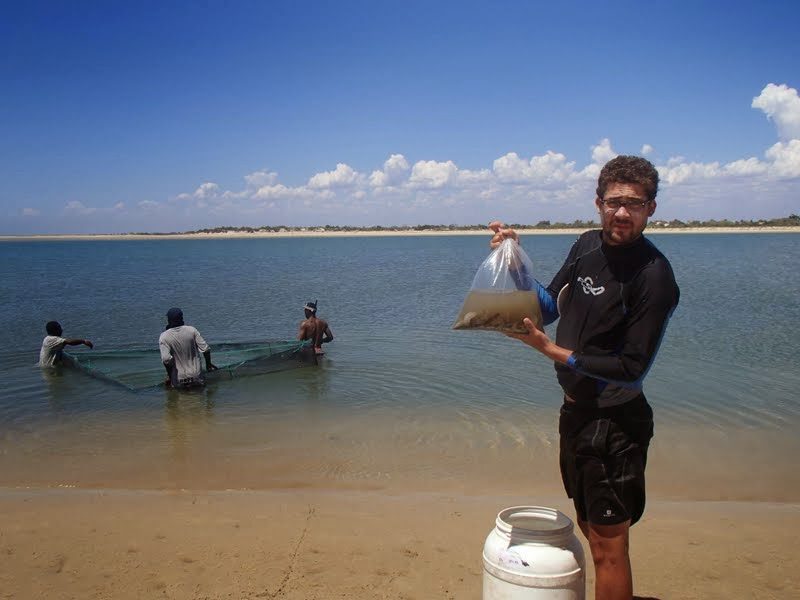
Nicol from Copefrito delivers the sea cucumbers in Belo sur Mer
Finally, the day of truth came. Despite the sea cucumber’s long journey, a flight followed by a rough vedette trip to reach the pens that had been built to welcome them in Belo, all juvenile sea cucumbers made it just before dark, alive and well! The following days they were taken into seven different pens in different places around Belo sur Mer.
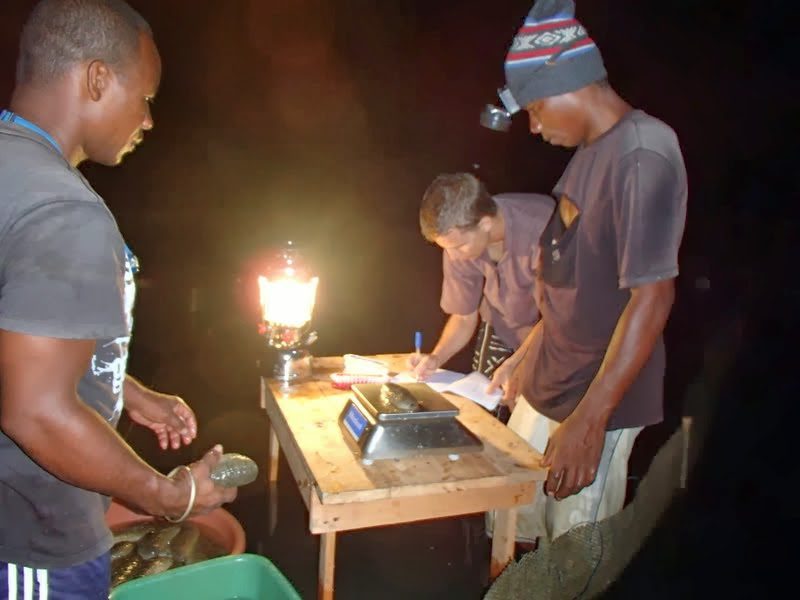
Our team has been going out every spring tide to check, clean, fix the pens, or to cut new sea weed lines out of the ones that are big enough. For the sea cucumbers, monitoring must be done at night, when they crawl out of the sand, with the aid of a flashlight. Never mind if standing in the mangrove at night with a petrol lamp looks like a big sign saying, “Free for all, help yourself!” to the mosquitos, it enabled me to get to know Belo a bit differently.
One night, while walking back home at three in the morning, we were lucky enough to see the tracks of a nesting sea turtle, a rare and happy sight here!

In December, three months after they had arrived in Belo, many of our precious juvenile sea cucumbers had reached 50g on average, which means that they were growing well and also becoming more resistant to predators like crabs.
The final challenge now will be for them to survive the rainy season, when they can be threatened by fresh water inundation. If they can make it through this, we should be ready to expand rapidly, bringing benefits directly to community members. We hope that this new source of income will result in improved livelihoods for fishers, and less pressure on the local fisheries.
We also hope that this isn’t the last time that exciting new initiatives like this one can come about in a matter of months, rather than years!
